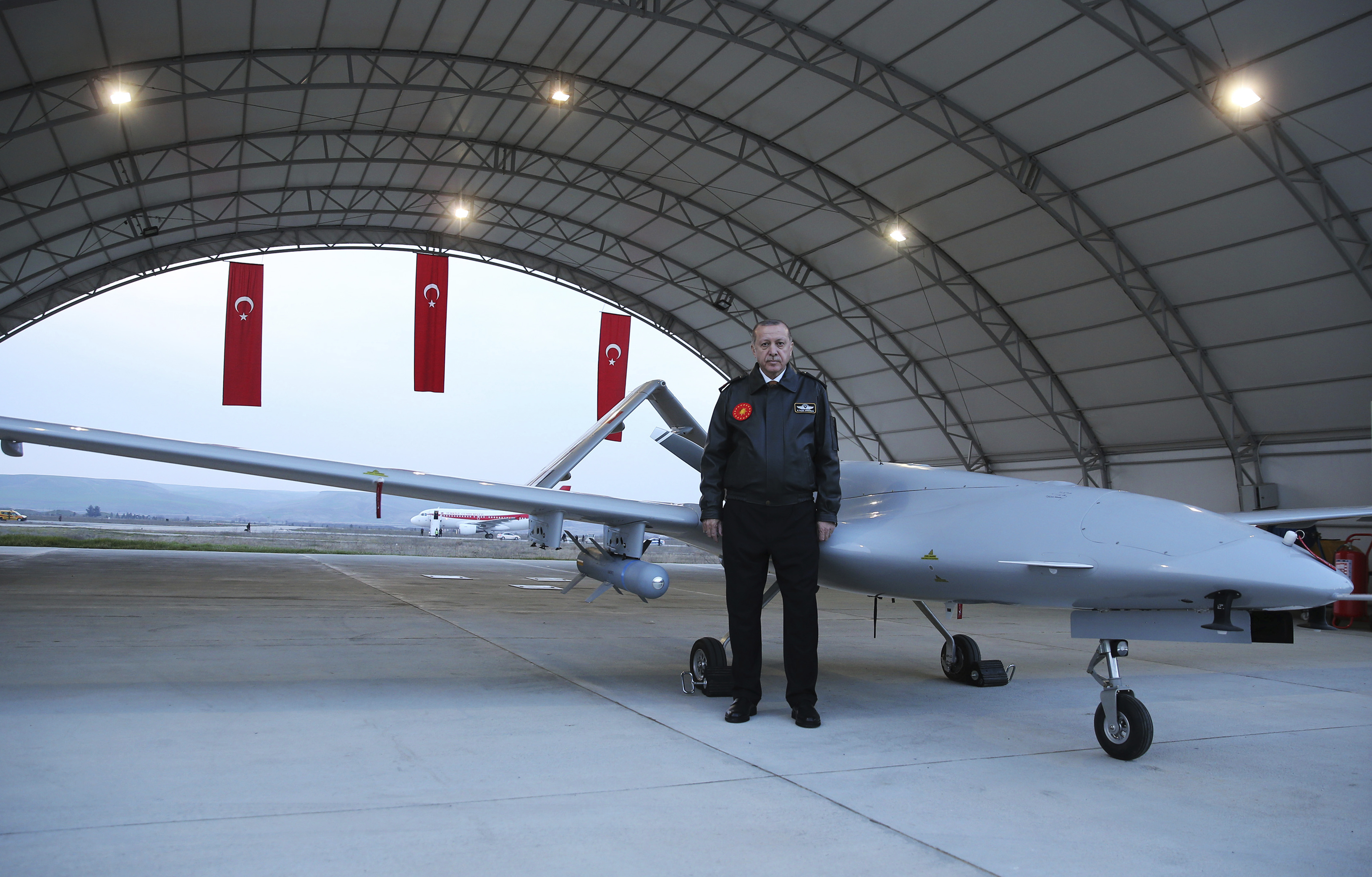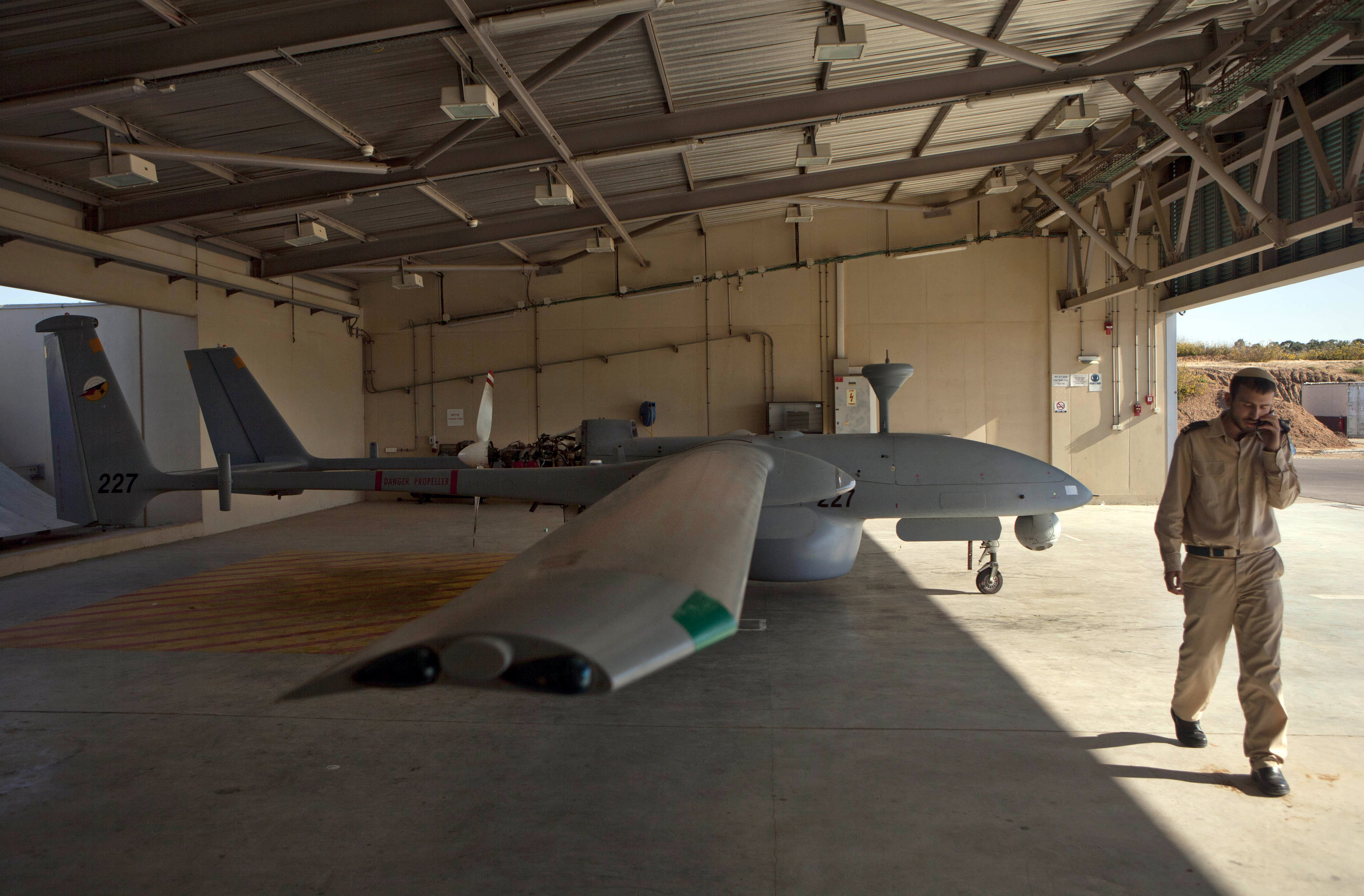We knew this had been at least on the table for some time, but Reuters reported today that the Trump Administration is looking to ‘reinterpret’ the over three decades old Missile Technology Control Regime (MTCR). The MTCR is an agreement between 35 countries that places severe restrictions on the export of missiles and unmanned aircraft that can carry payloads of more than 1,100 pounds to distances of more than 190 miles. The Administration’s change policy could allow the U.S. to export military-grade unmanned aircraft systems (UAS), even possibly those with kinetic capabilities, to many more governments than the handful that are allowed right now.
Doing so would represent a huge financial opportunity to U.S. aerospace and defense firms that currently have a very limited set of customers they can sell more advanced unmanned systems and their accouterments, including munitions, to. This change would likely lead to whole new classes of American-made drones that specifically address foreign customers’ unique needs and financial limitations. In other words, the development and sale of advanced U.S. drone tech wouldn’t be largely restrained to the systems the Pentagon has developed for itself. While all this may sound great to some, there are some potentially massive negative consequences that could come with such a policy shift, as well.
Reinterpreting the MTCR is part of a broader Trump administration effort to sell more weapons overseas. It has overhauled here a broad range of arms export regulations and removed the U.S. from international arms treaties including the Intermediate-Range Nuclear Forces Treaty and the Open Skies Treaty.
Sidestepping the accord would allow U.S. defense contractors General Atomics Aeronautical Systems Inc and Northrop Grumman Corp to break into new markets currently dominated by less sophisticated offerings from China and Israel, which do not participate in the MTCR.
Heidi Grant, the Pentagon’s Director of Defense Technology Security Administration, declined to comment on the pending MTCR policy change but said the U.S. military is eager to see drone sales expanded to more countries. Such sales would bolster the militaries of allies and replace drones sales from other nations, she said. “If we are unable to meet this growing demand, we shoot ourselves in the foot,” Grant told Reuters.
She said the drones would help allies fight terrorism, establish border control and generally help stop threats before they reach the United States. Grant declined to name specific nations the Pentagon believes should get more U.S.-made weapons.
The State Department, which makes final decisions on drone sales, declined to comment on the policy change. The White House also declined to comment.
U.S. agencies including the departments of Commerce, Energy, Justice and Homeland Security agreed to the change in May, and the State Department is expected to approve the first drone sales under the new interpretation as soon as this summer, said the U.S. official and industry executives. They said the administration has already notified Northrop Grumman and General Atomics, the two major U.S. drone makers, of its plans.
The change is scheduled for a review by the White House National Security Council at its June 16 meeting, said one of the executives and a former U.S. official with knowledge of the internal policy discussions. The council is expected to support the policy change and discuss a possible White House announcement, they said.
While Grant is correct that drones could help friendly countries fight terror and monitor their own borders, they have also been proven to be increasingly decisive weapons used in proxy wars far from a country’s own shores. Maybe the best example of this is how Turkey changed the tide of the civil war in Libya in recent months, with the country’s indigenously developed armed Bayraktar TB2 drones massively contributing to the success of that operation. In fact, some would argue the arrival of the Turkish drones largely turned around the conflict for the struggling government in Tripoli.

Bayraktar is also a good example of a drone class the United States does not make or export. It sits between the larger and more complex MQ-9 Reaper and smaller drones like the RQ-7 Shadow, but does not rely as heavily on beyond-line-of-sight data-links for man-in-the-loop control like the MQ-1 Predator. This is a niche in the marketplace that seems most attractive for air arms abroad that may not be able to afford a Reaper, or even a high-bandwidth satellite data-link controlled drone of any type, or that may not want to deal with the technological complexity of those systems, but does want higher performance, long-endurance, and the kinetic punch of something larger than what’s available smaller and shorter-ranged types. It’s also worth noting that Turkey, which is party to the MTCR, built the Bayraktar specifically to fall just within the lower Class II section of systems that are less regulated by the MTCR.
Without having to rely on the U.S. as the primary customer, along with a small handful of potential buyers abroad, innovation can happen across the UAS industry in the United States at a far more rapid pace if America’s policy in regards to the MTCR were to shift.
While this sounds great for business and technological innovation, there is clearly a dark side to the equation. Proliferating unmanned systems, some of which may be capable of striking targets with pinpoint accuracy over considerable ranges, provides new and potentially destabilizing capabilities to countries that are not as close to the U.S. foreign policy orbit or its circle of trust than what was required previously. The proliferation of kinetic drone systems, especially, will also inflame an already slowly building unmanned arms race around the globe.
As such, countries that are not allied with the U.S. or its friends will increasingly look to procure or develop their own capabilities in this regard. This, combined with what is clearly a lower threshold of use than manned platforms in an armed conflict, could invite some fairly disastrous unintended consequences. While some will say that these outcomes are inevitable, accelerating conditions in which drone wars become far more commonplace is a fairly ominous proposition, especially as defenses against this type of technology are still many years behind even the current pace of the drone threat.

Even in the unarmed role, the fact that these systems could be used on a country’s own population in ways that run counter to American values, especially when it comes to hardline state surveillance and quashing descent, could also be a less than stellar byproduct of opening up export restrictions for these systems. Yet it’s worth noting that the use of unmanned aerial surveillance even over U.S. soil is moving in a direction many are uncomfortable with.
Then again, if the United States doesn’t export these capabilities even to those it calls its friends, someone else eventually will. In fact, they already have been. China, in particular, which is not a formal member of the MTCR, though it has ostensibly agreed to abide by its guidelines as they were first defined in 1987, has been aggressively selling its armed drones abroad. Those systems have proven to be less reliable and effective than their western counterparts, but Beijing’s diverse set of unmanned technologies are accelerating developmentally at warp speed and the issues found in their first generation of drone exports will increasingly be solved in follow-on generations.

In fact, in some ways, China could eclipse the U.S. in unmanned aircraft technology in the not too distant future unless more of an emphasis is put on unmanned tech in America’s national defense strategy. Also, China isn’t the only exporter of military-grade unmanned aircraft systems. Israel, which is also not a member of the MTCR, as well as Russia, which is, among others, also have offerings that compete with some U.S. options or fulfill a different capability set that the U.S. doesn’t even have a ready solution for. But regardless of the Defense Department’s support, loosening export restrictions could turbocharge the American drone industry and keep the U.S. on the leading edge of all aspects of the unmanned air combat revolution.
When it comes to industry, unmanned aircraft manufacturers big and small, and the many companies that support their programs, stand to gain huge from this change, but for General Atomics, in particular, it could be a godsend. The aeronautical systems arm of this diversified high-technology firm has long held the mantle of the predominant unmanned aircraft manufacturer for the U.S. Air Force, but with the MQ-9 Reaper production line facing its end, the MQ-1 Predator already retired, the Avenger seemingly stillborn, at least in terms of robust domestic orders, and Boeing winning the Navy’s unmanned tanker contract, the storied drone maker faces a murky future.

Concepts like a high-value asset protector drone have been thrown out there, but as it sits now, the next big shot General Atomics has at a major U.S. Air Force contract will be for the MQ-9’s replacement in 2030. That program has been dubbed the MQ-Next. Of course, there are plenty of classified initiatives underway, but the ability to export their armed products to many different customers, including the stealthy Avenger and SkyGuardian version of the MQ-9, and to design new drone types to satisfy specific overseas customers’ needs, could provide a very solid fiscal foundation for General Atomics Aeronautical Systems Inc. for years to come.
So, as you can see, this is a very complicated issue with massive implications, good and bad. Above all else, the growing demand for such a change to America’s drone export policy serves as yet another reminder that the future of air combat, both at home and abroad, is very much unmanned.
Contact the author: Tyler@thedrive.com
